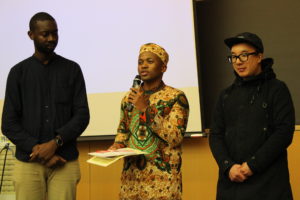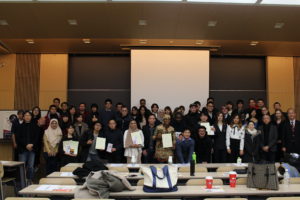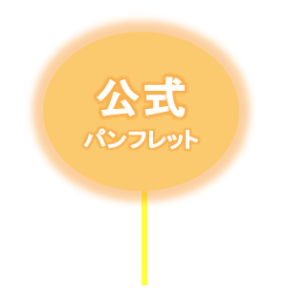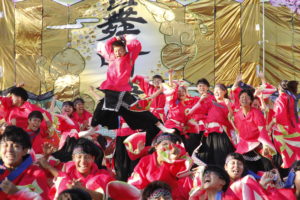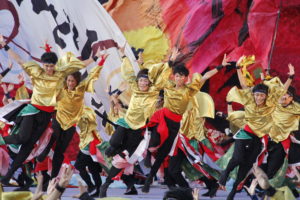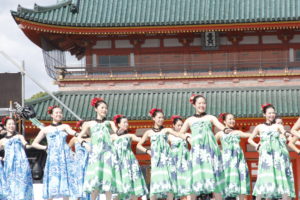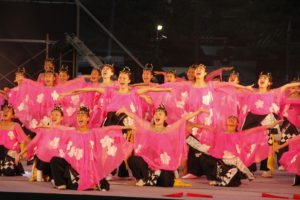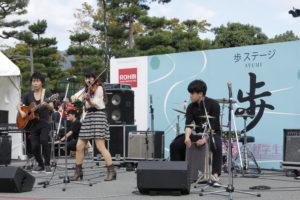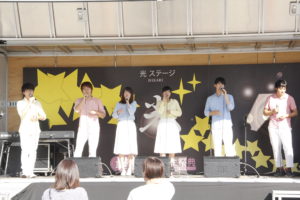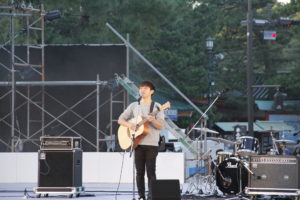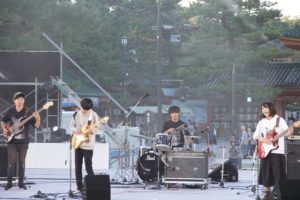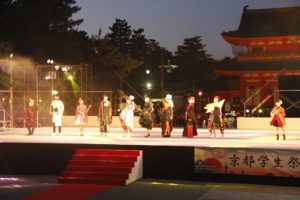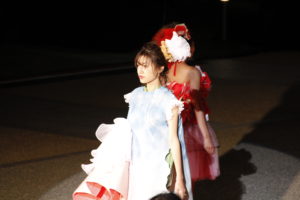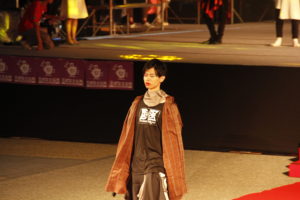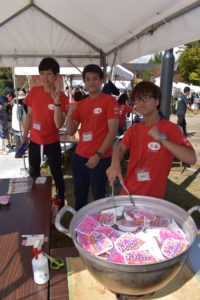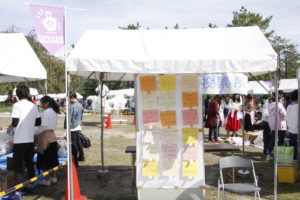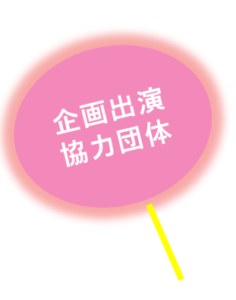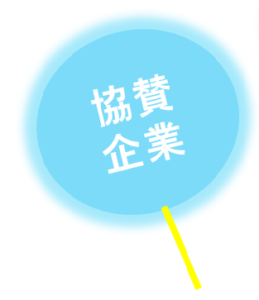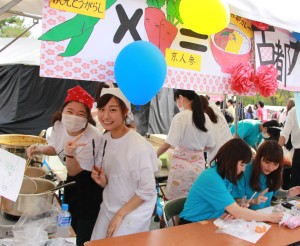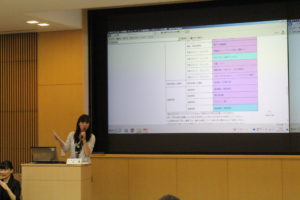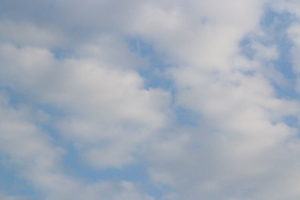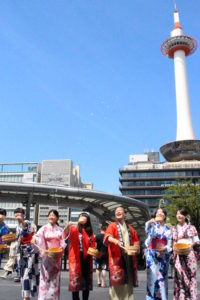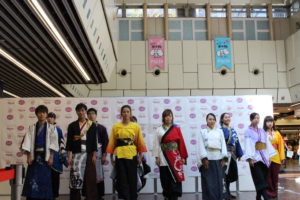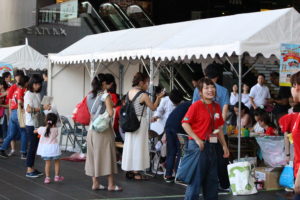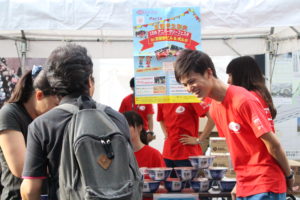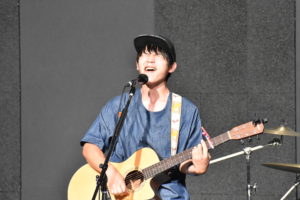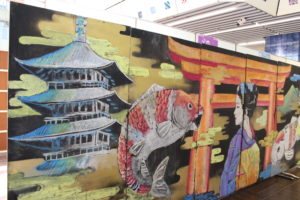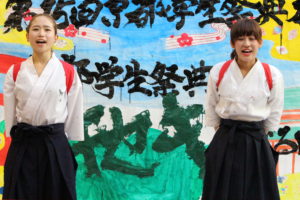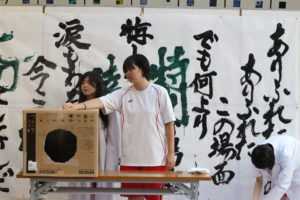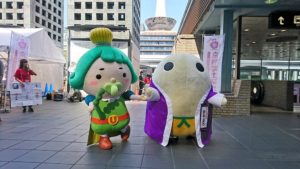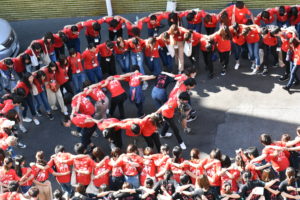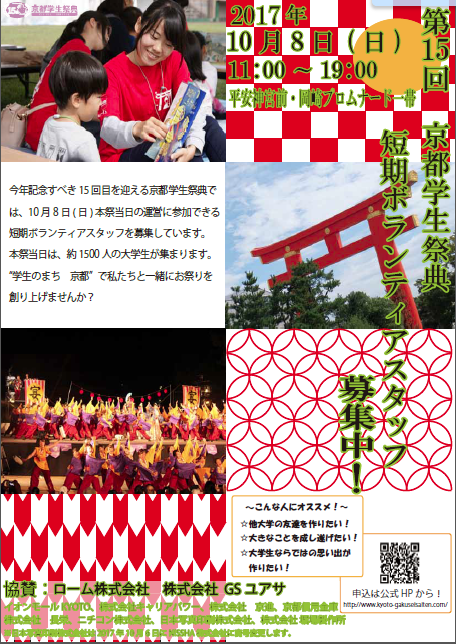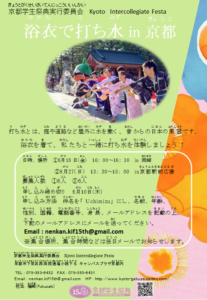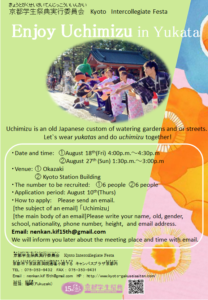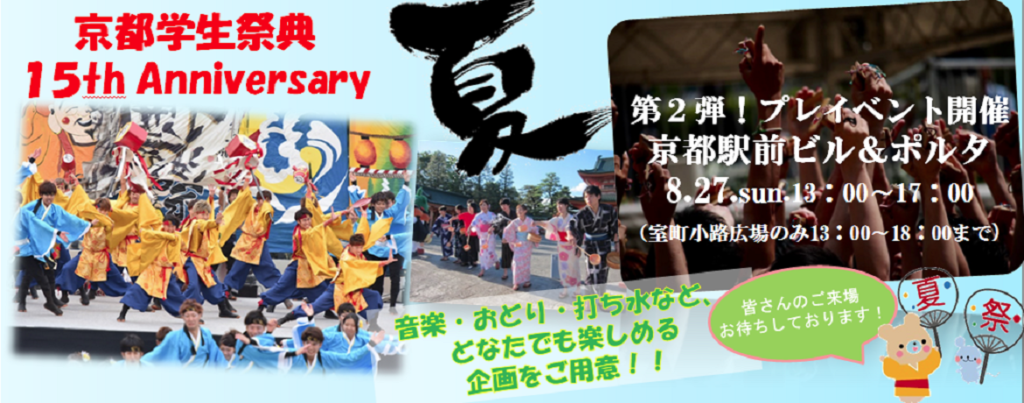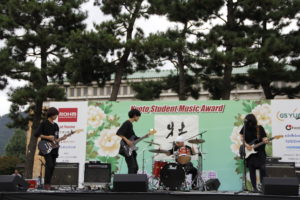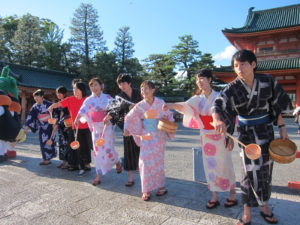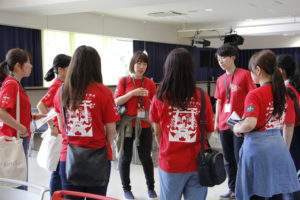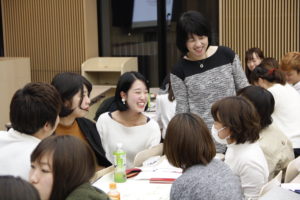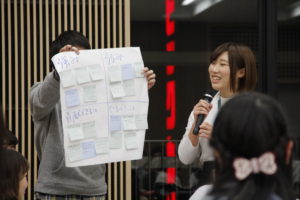In the “Internship Progress Course” of the University Consortium Kyoto, trainees worked on projects presented by host companies from mid-June to late November. On Saturday, November 11, the results were reported, and 10 projects made presentations over the course of one day. There were also presentations with videos and devising a format, showing the efforts and results of working on the project. At the completion ceremony after the results debriefing session, the coordinator faculty members handed out a “certificate of completion” for each project, and the “Internship Progress Course” for 2017 came to an end.
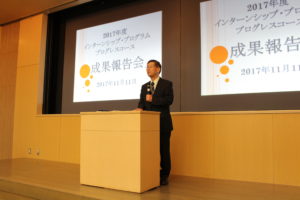
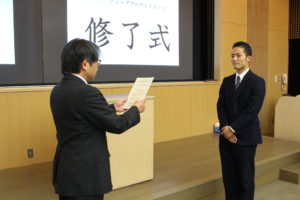
| Date & Time |
Saturday, November 11, 2017 10:40~17:50 |
| Venue |
Campus Plaza Kyoto, 5th Floor, Lecture Room 1
|
Number of companies and organizations participating in the project
(In order of presentation of the results report) |
9Companies and Organizations
Kyoto Cinema / Yumecom Co., Ltd. / Kyoto City Environmental Conservation Activities Promotion Association / Mirai Film Company / Osaka NPO Center / Wine Grocery Co., Ltd. / Day Alive Co., Ltd. / Non-profit organization Children’s Independence Village Warm-up School from here / Kyoto Prefectural Board of Education
|
| Number of students |
32 students from 11 universities
(Kyoto Tachibana University, Kyoto Koka Women’s University, Kyoto Sangyo University, Kyoto Women’s University, Kyoto Bunkyo University, Otani University, Doshisha Women’s University, Doshisha University, Ritsumeikan University, Ryukoku University, Bukkyo University)
|
| Number of Coordinator Teachers |
8
(Ryukoku University, Kyoto Women’s University, Kyoto Seika University, Fukuchiyama Public University, Kyoto Institute of Technology, Kyoto Koka Women’s University, Kyoto Koka Women’s University Junior College, Kyoto Gakuen University)
|
Kyoto Cinema
~PIA Film Festival (PFF) Management Support~
With the goal of increasing the number of visitors to the Pia Film Festival (PFF), there were presentations on the program for the PFF, ticket creation, promotional activities, help with the management of screenings at external facilities, and the state of the PPT day. There were also presentations on the results of the activities and points of reflection.
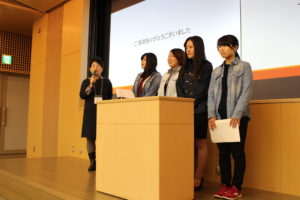
YUMECOM CORPORATION
~Senior Support Desk Service Business< Create, Disseminate, and Sell>~
This project aims to create (planning), publicize (publicity), and guide (sales) the business based on an understanding of the purpose and social necessity of the senior support desk’s service business. Since the trainees were not able to make presentations, the coordinator, Ms. Sakiko Yoshida, presented the project activities carried out by the trainees.
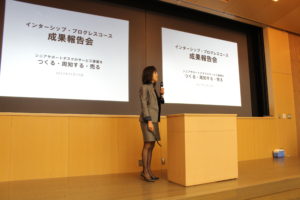
Kyoto City Environmental Conservation Activities Promotion Association
~Sending out the Global Environment Kyoto Conference (KYOTO+20) from university students! ~
In preparation for the Kyoto Conference on the Global Environment 2017 (KYOTO+20) scheduled to be held on December 10, this project will push the “motivation switch” for young people, mainly university students, to become eco-friendly. He gave a presentation on the implementation of the questionnaire conducted for the project, the results of the aggregation, and the panel to be created based on the survey results.
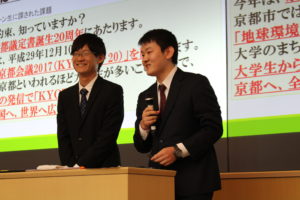
Mirai Films
~Let’s make an interesting movie and show it in a movie theater~
In the additional filming of the movie “Gohan,” there were presentations on the experience of learning knowledge and skills on set, and in the planning for the screening, the selection of the location and the state of public relations activities. On the day of the screening, more than 100 visitors came to the screening, and there was a presentation about the results of the project.
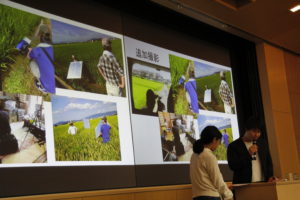
Certified NPO Osaka NPO Center
~Creation of a web magazine with the theme of “social”~
The goal was to create two articles and one video in order to create content to let people know about the efforts of social entrepreneurs, and there were presentations on the companies they interviewed, the videos they created, and the points of reflection and future issues in the interviews.
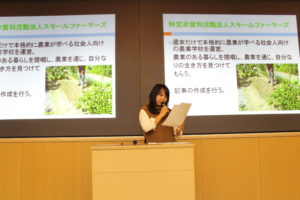
Wine Grocery
Inc. ~Planning and holding wine seminars for students~
While learning about wine through work at a wine shop, this project assumes the content of a wine seminar for students, and plans and executes the seminar. He presented the difficulties he faced in planning the content of the seminar and creating flyers. In addition, there were presentations on work experiences outside of the seminar, the state of the seminar on the day of the seminar, and the results of the questionnaire conducted at the seminar.
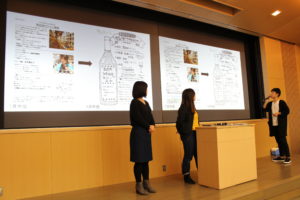
Day Alive
Inc. ~Contents planning for a website that conveys the charm of Kyoto~
This is a project to convey the charm of Kyoto. Based on the results of the questionnaire, the interviewees were determined, and the interviewees were introduced and the articles they actually created. In addition, there were presentations about the experiences they learned to create the website and the realizations of working.
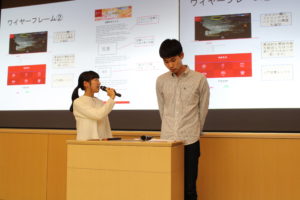
~Auction Customer Base Expansion Project~
The goal of the project was to get the younger generation interested in antiquities and auctions, and to increase the number of customers who attend auctions, and we conducted a survey. In addition, he analyzed the results of the questionnaire and presented an event plan to get young people who are not interested in antiquities to be interested.
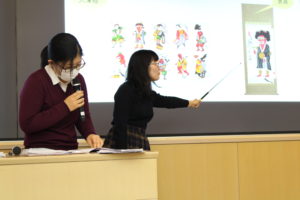
Specified Non-Profit Organization Children’s Independence Township Warm-up School from here
~Connecting and weaving hope’s “Kokonatsu Festival” in Yogo~
Local residents, staff from here, and boarding students work together to hold the 7th “Kokonatsu Festival”. The theme was “Seven Lights that Connect Hearts: Our Future Colored from Here,” and there were explanations and introductions of events and reflections on the activities of the dormitory and the “Kokonatsu Festival,” as well as reflections on the project activities.
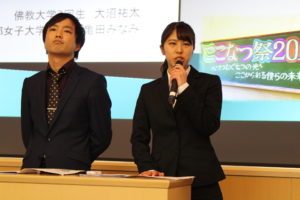
Kyoto Prefectural Board of Education
~Teacher Training Support Seminar~
Higashi-Uji Junior High School
Mukoyo Elementary School
Joyo Junior High School
Each of the trainees gave a presentation. They gave presentations on what they felt, what they noticed, and their thoughts by introducing the internship, the activities during the internship, and actually interacting with the students at the school.
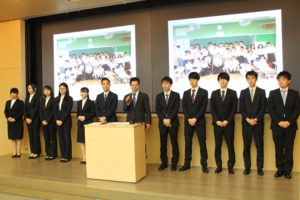
Social gathering
After the debriefing session, a social gathering was held. Three trainees served as moderators, and the participants had a great time with games such as self-introduction bingo and sudden interviews. It was a social gathering where I was able to interact with various people such as trainees, coordinators, and host people.
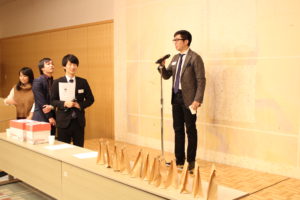
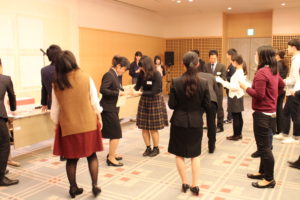
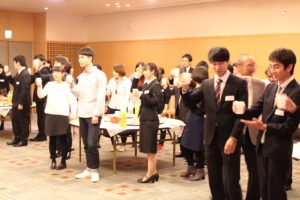
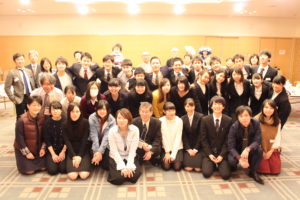
Inquiries
University Consortium Kyoto Internship Project Promotion Office
TEL 075-353-9106 FAX 075-353-9101
〒600-8216 Shimogyo-ku, Kyoto-shi, Nishitoin-dori, Shiokoji, Shimo-ku, Kyoto, Campus Plaza Kyoto
* Reception hours: Tuesday ~ Saturday 9:00 ~ 17:00 (excluding year-end and New Year holidays)
